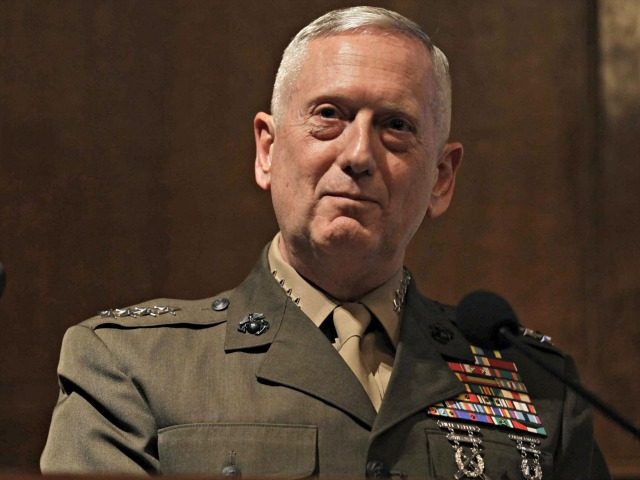WASHINGTON, DC – Defense Secretary James Mattis said Tuesday for the first time in the 16-year war in Afghanistan, all six Afghan military corps are now on the offensive.
“Beginning last month, and for the first time in this long fight, all six Afghan military corps are engaged in offensive operations,” Mattis told senators at a Senate Armed Services Committee hearing on the new strategy.
“We’ve never had all six of them working at the same time,” he said.
The milestone underscored how long it has taken for the U.S. to build an Afghan force able to go on the offense against a resilient enemy.
The Obama administration in 2009 ordered 30,000 more U.S. troops to Afghanistan, bringing troop levels to more than 100,000 and shrinking the areas controlled by the Taliban.
However, after former President Obama declared the end of the U.S.-led “combat mission” in 2014 and announced a plan to reduce the number of Americans there to an embassy presence by 2017, the Taliban went on the offense, taking back control of or contesting territory where 36 percent of the population lives.
This year, the U.S. commander in Afghanistan called the fight a “stalemate.”
The offensive by the Afghan military comes as more than 3,000 U.S. troops are headed to Afghanistan to bolster those Afghan forces, likely on the battlefield.
Mattis said those troops will be advising Afghan forces at the battalion and brigade levels but will be allowed to accompany forces to the battlefield and can employ fire support.
U.S. forces will also have more authority to employ airstrikes against the Taliban, Mattis said. Under the Obama administration, the Taliban needed to be within a certain distance of U.S. troops before striking.
Mattis said the additional troops is one part of the new strategy in Afghanistan, which military leaders have dubbed “R4S” — regionalize, realign, reinforce, reconcile, and sustain.
Mattis said “regionalize” means to take a comprehensive view to resolving the war that includes regional players India, Pakistan, Iran, Russia, and China.
“Realign” means shifting the main effort of U.S. troops to training and advising Afghan forces at the battalion and brigade level, he said. Mattis added that Afghan forces would carry out the fighting but that U.S. advisers could accompany “tactical units” and bring “fire support to bear when needed.”
“Make no mistake, this is combat duty, but the Afghan forces remain in the lead for the fighting,” he said.
“Reinforce” means the addition of over 3,000 U.S. troops in the “coming months” to the approximately 11,000 U.S. troops and 6,800 coalition forces already there, he said. Those extra troops will extend the U.S.-led coalition’s advisory effort, he said. Fifteen nations have also signaled they will increase their troop support, he added.
“Reconcile” means convincing the Taliban that the U.S.-led coalition is committed to staying in Afghanistan until it comes to the negotiation table with the Afghan government.
“War is principally a matter of will, and the international community is making clear that it will stand alongside the Afghans committed to this fight,” Mattis said.
Mattis did not explicitly define what “sustain” meant, though he said the U.S. would shift from a time-based approach to a conditions-based approach in Afghanistan — meaning it would stay in Afghanistan until necessary to convince the Taliban to come back to the negotiating table.
He also said the new strategy would be “sustainable” politically, fiscally, and militarily,” since it will be carried out primarily by Afghan troops.
“We’re already starting to see the psychological impact of this new strategy, both militarily in the field as well as through [Afghan President Ashraf Ghani] and the Afghan Government’s commitment to reform,” he said. Afghan military casualties were also going down, he added.
Senators at the hearing grilled Mattis and Chairman of the Joint Chiefs of Staff Marine Gen. Joseph Dunford on why they believed this strategy would work after 16 years of pursuing different strategies.
“After 16 years, should the taxpayers of America be satisfied that we are still in a, quote, ‘stalemate?’ I don’t think so,” said Senate Armed Services Committee Chairman John McCain (R-AZ).
Dunford said that, for many years, there has been a “short-term” view on Afghanistan, which led Afghans, the Taliban, and regional actors to hedge, assuming the U.S. was going to pull out.
“The Taliban, frankly, fed that message to their fighters, and that’s how they motivated their people year after year – was, ‘One more year in a fight, and then we’re going to defeat the coalition. They are going to leave Afghanistan.'”
“We have not, to this point, presented the Taliban with a conditions-based approach that extends the horizon out for our commitment, makes an enduring commitment and causes Taliban leadership, now, to approach their subordinates with that context,” he said.
Mattis said there was now a “regenerated sense” the Afghan army can push the Taliban into a position where they can have no hope of winning and has to talk.
“They stop killing people, they live by the constitution and they break with international terrorists,” he said. “That’s a pretty low bar, and we intend to peel off a fair number as they see they have no hope of military victory.”

COMMENTS
Please let us know if you're having issues with commenting.